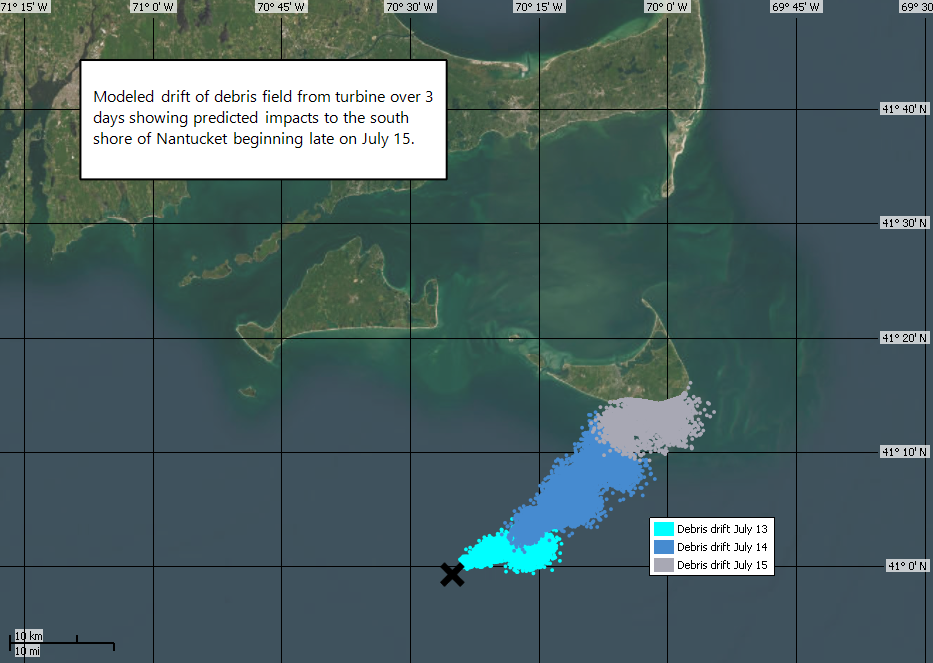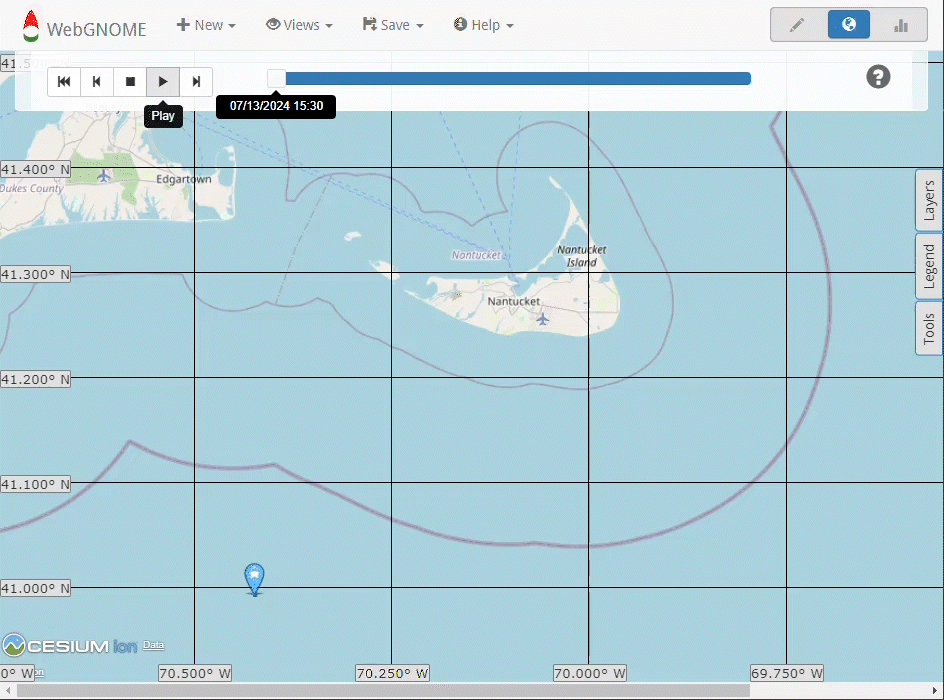NOAA’s Office of Response and Restoration (OR&R) provided important information to aid in tracking the path of wind turbine blade parts after the offshore wind energy company, Vineyard Wind, noticed a broken blade on one of its wind turbines offshore of Martha’s Vineyard on July 13.

The Northeast Region Scientific Support Coordinator with OR&R's Emergency Response Division was contacted on July 15 to provide trajectory information to assist with recovering pieces of the broken blade. About one third of the blade (approximately 120 feet) fell into the water, with three large pieces recovered. At that time, smaller fiberglass sections and pieces of the blade, some less than one square foot in size, remained in the water.

Trajectory estimates produced by the OR&R modeling team predicted pieces of the blade could make landfall at Nantucket by July 15. Utilizing NOAA’s trajectories, response personnel were sent to Nantucket to assess the beaches. Upon their arrival on July 16, field crews discovered broken turbine blade pieces on the island’s southward-facing beaches. Nantucket residents reported pieces of green and white foam debris on the island’s south shore, from Madaket to Nobadeer. Due to the presence of the debris in the water, all southside beaches were closed to swimming.
NOAA OR&R’s response to this wind turbine incident represents an important first for the office and highlights the adaptive expertise of its oceanographic modelers. OR&R’s primary mandate is to provide scientific support to the USCG when oil or chemicals are spilled into coastal waters or the Great Lakes. However, as illustrated by this wind turbine trajectory forecast, the office’s scientific and modeling expertise can provide valuable information for other types of incidents, such as drifting whale carcasses, search and rescue operations, or shipping containers lost overboard.
OR&R's spill modeling predicts the movement of hazards and potential impacts to natural resources of concern which OR&R applies to decision support across NOAA and interagency partners supporting protected resources, protected areas, and safe navigation.
